- Little backyard houses — aka “accessory dwelling units” — are springing up all over Vancouver.
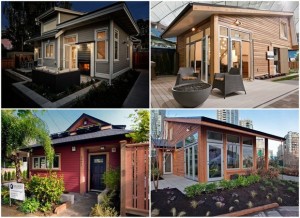 This is a partial remedy to the affordable rental shortage that afflicts municipalities all over North America, including Vermont. It also affords an optional living arrangement for older people who want to age in place. In Vancouver, these appendages are called “laneway houses,” and some of them are pretty handsome. There’s plenty of room for additions like this in Burlington, even if we don’t have alleys — and in plenty of other Vermont communities, too.
This is a partial remedy to the affordable rental shortage that afflicts municipalities all over North America, including Vermont. It also affords an optional living arrangement for older people who want to age in place. In Vancouver, these appendages are called “laneway houses,” and some of them are pretty handsome. There’s plenty of room for additions like this in Burlington, even if we don’t have alleys — and in plenty of other Vermont communities, too. - A “mobility program” in heavily segregated Baltimore moves families from high-poverty public housing complexes in the city to higher-rent, higher-opportunity suburbs. This is an initiative very much in the spirit of affirmatively furthering fair housing, but it serves a small fraction of the subsidy-eligible families in need and it operates largely under the radar, to minimize opposition. One obstacle: a shortage of affordable housing in suburban communities.
- Plattsburgh has a new 64-unit affordable housing complex, called Homestead on Ampersand.
 It’s just a couple of miles from the neighborhood where complaints about a proposal for a smaller affordable housing complex prevailed.
It’s just a couple of miles from the neighborhood where complaints about a proposal for a smaller affordable housing complex prevailed. - Columbus, Ohio, plans to transform a vacant downtown building into “workforce housing” – which in this case means housing for people who make $40,000 to $60,000 a year. The made-over building would feature micro units – apartments of 300 square feet or so and targeted, presumably, to single Millennials. We’ve touched on the micro movement before, which seems to be taking hold mostly in bigger metro areas (here’s a roundup with a national map; for a more substantial study of the phenomenon, click here). But it has also spread to Kalamazoo and, as we’ve noted, Syracuse, so there’s no reason it couldn’t work in an over-priced city like Burlington, where officialdom is forever wringing its hands about how young professionals have trouble finding affordable accommodations.
Category Archives: renters
The Burlington College land deal
Burlington College’s intent to sell off much of its lakeside acreage drew opposition when it was announced two years ago. Now, as a development plan awaits City Council approval, the grumbling continues. Some of the grumblers apparently cling to an obsolete fantasy: namely, that most of the property could be spared development and conserved as greenspace. 
Thumbnail history: In 2011 the college bought 32 acres from the Catholic diocese for about $10 million, then came to the realization, after a couple years of stagnant enrollment, that it couldn’t afford the payments. To survive, the college would have to sell off a big chunk of the land, and it revealed its plan to do so to housing developer Eric Farrell a little over two years ago.
The deal wasn’t done, though, and there was a window of many months when someone else — someone like the Nature Conservancy, say, or a land trust — could have stepped forward to offer the $7 million or so that would have been necessary to buy the developable land for conservation purposes. No one did, though. That’s why the greenspace fantasy is obsolete.
Not developing the land was not an option, at least if Burlington College wass to stave off bankruptcy. And if the college were to go belly up, well, then ownership of the property would have reverted to creditors (principally a bank), leading to a development scenario perhaps less palatable than Farrell’s.
If there’s anything reasonably left to grumble about, it’s in the details of the agreement the City Council will review next week. Among those details, as we understand them: The city is acquiring 12 lakeside acres for $2 million to be maintained as parkland (a parcel, by the way that has been appraised at $2.9 million). Farrell will develop about 550 housing units on 16 acres, of which 160 will be affordable to families of income below 65 percent of the median, with other units targeted to people of moderate income, while the rest are market-rate; and 200 beds for students on a parcel the college will retain for its campus.
This much is clear: The city is in desperate need of more affordable housing, and it has its inclusionary zoning ordinance to thank for the affordable units in this scheme, and (2) This inclusive new neighborhood, as planned, will be one of exemplary economic diversity.
Surprise! Some rents going down
Burlington’s chronic housing-affordability problem is bad enough — more than a third of the city’s 9,500 renting households are paying more than half their income for rent and utilities, which puts them in the “severely burdened” category — but guess what? It’s getting arguably worse. 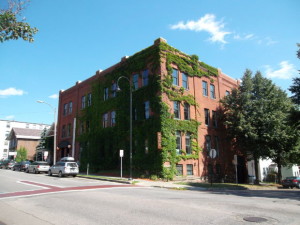
HUD just came out with its 2016 fair market rents for the Burlington/South Burlington metro area, and they’re lower than they were for 2015. This despite the fact that actual rents in this area have been going up every year. (The 2016 numbers are up and down across the state, as Vermont Housing Finance Agency’s news blog helpfully details.)
If you really want to know why Burlington’s numbers went down, you can go to the HUD page to see the methodology. The unfortunate upshot, though, is that anyone with a Section 8 housing voucher is going to have less to choose from in 2016 than they do this year. That’s because apartments that cost more than the “fair market rent” are off-limits for subsidy. (If it makes you feel any better, remember that majority of Burlington’s “burdened” households don’t have vouchers anyway. Nationally HUD rental assistance extends to only about one-fourth of the people who are income-eligible.)
OK, let’s consider a two-bedroom apartment. The 2016 “fair market rent” is $1,172 (as compared to 2015’s $1,302). What are the offerings on Craigslist?
Here are the first 10 listed rents for two-bedroom apartments in Burlington and environs (South Burlington, Colchester) that we found at noon Monday. (Craigslist is constantly updated, so if you do the search the results will vary):
$2,500, $1,600, $2,500, $2,100, $1,425, $2,400, $2,025, $2,000, $2,000, $1,650.
How “fair” is that market? Now, perhaps Craiglist rents tend to be above average (are there studies that document this?), but there’s not much consolation in that, especially if you have a housing-choice voucher.
Renters arise!
Since 2005, the number of renters in this country has gone up 9 million, to 41 million, the biggest surge of any decade on record. That brings the share of renting households to 37 percent, the highest in half a century. Meanwhile, their rents are up and their incomes are down: From 2001 to 2014, rents rose 7 percent (above inflation) and incomes dropped by 9 percent.
The biggest increase in renter households, surprisingly, came from the Baby Boomer cohort – people in their 50s and 60s. In fact households 40 and older make up the majority of renters.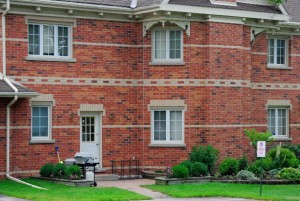
These are among the findings in “America’s Rental Housing,” a 44-page study out this week from Harvard’s Joint Center for Housing Studies.
Not only are there many more renters, but many more of those renters can’t comfortably afford to live where they do. In 2014, 49 percent of renters were “burdened” (meaning they paid more than 30 percent of their incomes for rent and utilities) and 26 percent were “severely burdened” (more than 50 percent). According to Vermont Housing Data, Vermont’s current rates are a tad higher: 52.5 percent and 26.4 percent.
Yes, the housing burden falls most heavily on low-income people, but it’s growing among the middle-income stratum as well:
“(T)he sharpest growth in cost-burdened shares has been among middle-income households. The share of burdened households with incomes in the $30,000–44,999 range increased from 37 percent in 2001 to 48 percent in 2014, while that of households with incomes of $45,000–74,999 nearly doubled from 12 percent to 21 percent. Regardless of income level, though, the shares of cost-burdened households reached new peaks in 2014 among all but the highest-income renters.”
Meanwhile, only about one-fourth of eligible lower-income households receive housing assistance (Section 8 vouchers are not an entitlement!); funding for HUD’s three biggest rental assistance programs is about the same (corrected for inflation) as it was seven years ago, when the economy crashed; and the HOME program, a major source of federal funding for housing programs, has been cut way back. Private developers continue to add to the multi-family housing supply, but most of the recent additions “serve the higher end of the market,” according to the report. As it happens, high-income households (annual $100,000 or more) represent a small but fast-growing share of the rental market.
The report asserts:
“The challenge now facing the country is to ensure that a sufficient and appropriate supply of rental housing is available for a diversity of households and in a diversity of locations. While the private market has proven capable of expanding the higher-end rental stock, developers have only limited opportunities to meet the needs of lowest income households without subsidies that close the large gap between construction costs and what these renters can afford to pay. In many high-cost markets, moderate-income households face affordability challenges as well.”
“Diversity of locations” is an invocation of AFFH (affirmatively furthering fair housing) and the goal of ensuring that a good share of affordable housing is in “high-opportunity” neighborhoods,” as in what follows:
“Policymakers urgently need to consider the extent and form of housing assistance that can stem the rapid growth in cost burdened households. Beyond affordability, they also need to promote development of a wider range of housing options so that more renter households can find homes that suit their needs and in communities offering good schools and access to jobs. It will take concerted efforts by all levels of government to capitalize on the capabilities of the private and not-for-profit sectors to reach this goal.”
Dare we suggest that concerted efforts have yet to be mounted, or even contemplated, by government at many levels?
NIMBY notes from all over
Fresh news of NIMBY opposition to affordable housing comes out of … well, our own backyard.
From North Country Public Radio, we learn that residents in Plattsburgh managed to persuade the planning board to reject a proposed four-building residential complex, alleging familiar sorts of adverse effects that low-income people would have on traffic, safety, property values. 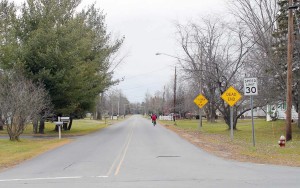 Affordable housing is a permitted use in that district, but…
Affordable housing is a permitted use in that district, but…
“It is transient housing,” one resident complained. “ They put people in there who are just out of jail, prison whatever until they can get back on their feet … I don’t want it in my area.”
“This concept of us serving transients is so far from reality,” countered the director of the housing organization that would be referring tenants. “The majority of the people that we serve are disabled. They are the veterans in your community. There are elderly people in your community that we serve…”
She might have also cited reports, like this one, that affordable housing can have an uplifting impact on economic development and property values.
Oh well. The developer is appealing the rejection in court. “The thrust of it was, they did not want ‘these people’ moving into their neighborhood,” the developer’s lawyer said.
Plattsburgh is in good company. Upper Saddle River, a toney community in New Jersey, is being sued for rejecting a multi-family housing complex, and thus, by proxy, new residents who happen to be black or Latino. Another interesting case of NIMBY opposition to multi-family housing recently arose in Arizona, where the “backyard” in question belonged to a mortuary! Apparently the mortuary and the developer resolved their differences, though.
NIMBYism gets some of the credit, or blame, for California’s housing-affordability crisis, and it certainly comes in many forms, as this entertaining catalogue attests. Among our favorites are “mega-mansion NIMBYs.”
New life for old idea?
When the housing-unaffordability problem comes up at a public meeting in Burlington, chances are someone will stand up and call for rent control.  Never mind that the city rejected the idea three decades ago and no one has made a serious effort to revive it locally. It’s an idea that never goes away, though, and is getting some fresh currency these days — where else, in California, the housing-unaffordability epicenter.
Never mind that the city rejected the idea three decades ago and no one has made a serious effort to revive it locally. It’s an idea that never goes away, though, and is getting some fresh currency these days — where else, in California, the housing-unaffordability epicenter.
Rent control’s heyday was in the ‘70s and ‘80s, apparently. Massachusetts did away with it in 1994 via a statewide vote, but it can still be found in many municipalities in New York, New Jersey and Maryland, as well as California, where tenants’ advocates are pushing to get more communities to sign on and have come up with an organizing toolkit. “Rent control moment gains momentum as housing prices soar,” read a recent news headline, but a closer look suggests that much of the impetus is in California. Most states, after all, have laws that prohibit rent control, although in Washington, there’s an effort to lift the ban for Seattle.
Any groundswell in favor of rent control would have to grow out of large numbers of renters, and renters are certainly on the increase nationally. A new Harvard report announces that “that 43 million families and individuals live in rental housing, an increase of nearly 9 million households since 2005 — the largest gain in any 10-year period on record.”
Renters are a distinct minority in Vermont, where the home-ownership rate is above average. In fact, renters outnumber homeowners in just two cities — Burlington and Winooski — so if rent control were plausible anywhere in Vermont, those would be the likely places. City voters would have to approve a charter change, which would require legislative approval. How unlikely is that?
Burlington voters overwhelmingly rejected rent control in a special election in 1981, during Bernie Sanders’ first mayoral term. (Actually, they rejected the creation of a “fair housing commission,” which everyone agreed was a proxy for rent control.) They were influenced by a publicity campaign against the measure mounted by commercial interests. 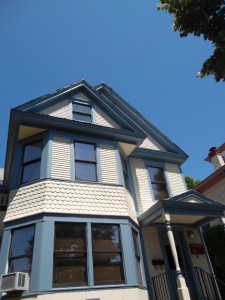 Sanders’ critics on the left complained he didn’t try very hard to see the idea through, and in fact he went on to promote affordable housing via a range of other policies.
Sanders’ critics on the left complained he didn’t try very hard to see the idea through, and in fact he went on to promote affordable housing via a range of other policies.
Barring a major ground shift, rent control will remain one of those recurrent policy ideas with no traction in these parts. Like single-payer health care.
Unease Down East
Burlington and Portland, Maine, have a few things in common. They’re the biggest cities in their states, they both pride themselves in their trendy livability (as measured by magazine rankings, food-trucks per capita, those sorts of things), they both experienced negligible development of rental housing for many years, they both worry about gentrifying neighborhoods, and they both have a housing affordability problem.
Portland’s problem might seem a bit more acute, thanks in part to a six-part series in the Portland Press Herald that elaborates on what the mayor-elect calls a “housing crisis.”  The themes echo other crises around the country – soaring rents (up 40 percent over the last five years), stagnant or declining incomes, middle-income renters priced out and fleeing to the burbs.
The themes echo other crises around the country – soaring rents (up 40 percent over the last five years), stagnant or declining incomes, middle-income renters priced out and fleeing to the burbs.
The average two-bedroom apartment in Portland, according to the newspaper, is $1,560. That’s too bad, because an apartment like that is out of reach for anyone with a housing voucher. HUD puts the fair-market rent for a two-bedroom in Portland at $1,074 – which happens to be well below Burlington’s $1,309. What’s more, landlords in Portland can capitalize on the hot rental market by charging non-refundable application fees, which their counterparts in Vermont cannot.
How Portland is going to relieve its “crisis” is an open question. The mayor-elect has appointed a committee. The city is examining municipally owned land with an eye toward potential sites for affordable housing. New developments are supposed to make some units affordable for middle-income renters, but that inclusionary policy apparently doesn’t extend to the working poor. Here, as elsewhere, the remedies seem to pale before the problem.
The co-op alternative
Before Burlingtonians succumb to the blandishments of “purpose-built” student-housing developers, they might do well to consider an alternative with a long tradition of affordability: student co-op housing.
Student housing co-ops are scattered around the country. Perhaps the best known is the Berkeley Student Cooperative, which dates from 1933 and offers housing to about 1,300 students in 20 properties. 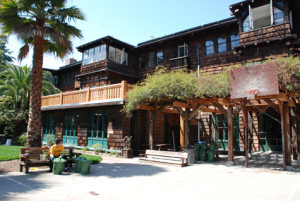 According to the co-op’s website, monthly rent is about $745 in a room and board house (compared to $1,354 in a university dorm triple) and $433 to $881 a month for single room in an apartment. (By comparison, the market rate for a one-bedroom apartment is typically over $2,000.) No wonder there are 1,000 students on the waiting list.
According to the co-op’s website, monthly rent is about $745 in a room and board house (compared to $1,354 in a university dorm triple) and $433 to $881 a month for single room in an apartment. (By comparison, the market rate for a one-bedroom apartment is typically over $2,000.) No wonder there are 1,000 students on the waiting list.
And yes, some of those Berkeley co-op houses have game rooms and hot tubs.
A thumbnail case for student co-ops can be found here, on the website of the North American Students of Cooperation (NASCO). Housing co-ops operate on variations of a shared-equity model. Here’s NASCO’s description of a common form:
“In a ‘Market Equity’ coop, a member joins the coop, buys a share, and lives in a unit. This is similar to something like a condo complex, but instead of owning one condo, you own a share in the whole complex. When you decide to leave the coop, you can sell your share at whatever the market will pay for it.”
Housing co-ops also come with shared governance, work expectations, and so on. They’re not limited to students, of course. Champlain Housing Trust has five co-ops with 81 apartment units in Burlington, with another one on the way on Bright Street.
You’ll never be faced with this choice, but it never hurts to ask: Which would you rather see on the northeast corner of North Winooski Avenue and Main Street: purpose-built student housing, with a climbing wall, or a student housing co-op without one?
Daunting affordability gaps
Here’s a seat-of-the-pants calculation that shows one dimension of Burlington’s (and Vermont’s) affordability problem for renters:
According to Vermont Housing Data, Burlington has 9,596 rental units. Of the households living in them, 61 percent are paying more than 30 percent of their income for housing — the standard threshold of unaffordability. By that standard, 5,853 rental units in Burlington are unaffordable to the people who live in them.
(The same source reports Vermont’s rental units at 69,581. More than half the households in those units – 52.5 percent – are paying more than 30 percent. That puts the state’s unaffordable rental units at 36,530.)
Those are just the figures for the standard housing burden. In Burlington, 35.7 percent of renters are severely burdened, paying more than 50 percent of their income on housing. That works out to 3,426 rental units that, for them, are severely unaffordable (and 18,369 such units statewide).
These are unsettling numbers, and of course there’s no easy remedy or policy panacea (although doubling public funding for affordable housing and raising the minimum wage to $15 would probably help).
Inclusionary zoning – which requires a specified percentage of units in new developments to be affordable – is among the policies that can be brought to bear. For a thorough, thoughtful treatment of the subject by Rick Jacobus, a Burlington alum, click here. He points out, among other things, that “inclusionary housing is one of the few proven strategies for locating affordable housing in asset-rich neighborhoods where residents are likely to benefit from access to quality schools, public services and better jobs.” In other words, it’s fully in keeping with the renewed national emphasis on affirmatively furthering fair housing.
He also writes that “inclusionary housing has yet to reach its full potential.” That’s an understatement in Vermont — one of 13 states that has statutes authorizing inclusionary policies that virtually no municipality except Burlington has taken advantage of – and in Burlington itself, where an inclusionary ordinance has been on the books for 25 years. Over that period, the policy has resulted in only about 260 affordable units (many of them condos).
That relatively low number reflects, in part, a lag in Burlington housing development in comparison to the rest of the county. What accounts for that, and is there any way the city’s inclusionary policy could be tweaked to make it more effective? Answers to these and other questions may be a year away. The Housing Action Plan calls for hiring a consultant to review the city’s inclusionary policy and make recommendations by next fall.
Here a crisis, there a crisis
Never mind California or the Northeast. The housing-unaffordability problem can be found lots of other places, some of them rather unlikely. If you breeze through news coverage from around the country, you can find stories from all over that use the phrase “crisis” or “crunch” or “shortage” to describe the local or regional housing-unaffordability profile:
Just in the past few days, stories have bubbled up from Taos, 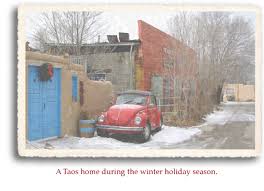 Jackson Hole, Aspen, Madison, Asheville, Hawaii, and Austin — all in crisis mode.
Jackson Hole, Aspen, Madison, Asheville, Hawaii, and Austin — all in crisis mode.
Austin is an interesting case: There’s not only an affordability shortage, most of the supposedly affordable units aren’t really affordable after all, according to a rather scathing audit that just came in. From the report summary: “The City does not have an effective strategy to meet its affordable housing needs. Neighborhood Housing and Community Development has not adopted clear goals, established timelines, or developed affordable housing numerical targets to evaluate its efforts in fulfilling the City’s adopted core values. Key information needed to evaluate program effectiveness is incomplete, inaccurate or unavailable.”  This, in the latter-day birthplace of public housing that the mayor pronounced the most economically segregated city in the country.
This, in the latter-day birthplace of public housing that the mayor pronounced the most economically segregated city in the country.
Among the places you might not expect to find a housing crisis: Minot, N.D., rural Iowa,  North Platte, Neb. (Say it ain’t so, North Platte!) And to think that this is not something the presidential candidates can even be bothered to talk about!
North Platte, Neb. (Say it ain’t so, North Platte!) And to think that this is not something the presidential candidates can even be bothered to talk about!
In fact, every county in the country can be said to be in crisis when it comes to housing extremely low-income households (that is, households with less than 30 percent of median income, 11.3 million nationwide). No county has enough units for such people, according to an analysis the Urban Institute did this summer. For an interactive map that will show you how many affordable units in each county for 100 poor households, click here. In Vermont, Orange, Windsor and Windham counties come out the best, with 49 affordable units for 100 households; Caledonia, Lamoille and Orleans have the fewest, at 29. The national average: 28.
Of course, the national challenge is not just to create plenty more affordable housing but to locate it judiciously. New housing options have to be provided for low-income people in low-poverty neighborhoods, otherwise known as “high-opportunity” areas. That’s what affirmatively furthering fair housing is about — breaking up historic settlement patterns of concentrated poverty and segregation and promoting integration.
Naturally, AFFH generates pushback. So, sprinkled among the wash of “housing crisis” stories are accounts of resistance to affordable housing projects in well-healed suburbs – such as Simsbury, Conn. (median household income$104,000) , and Wilmette, Ill. ($127,000).
